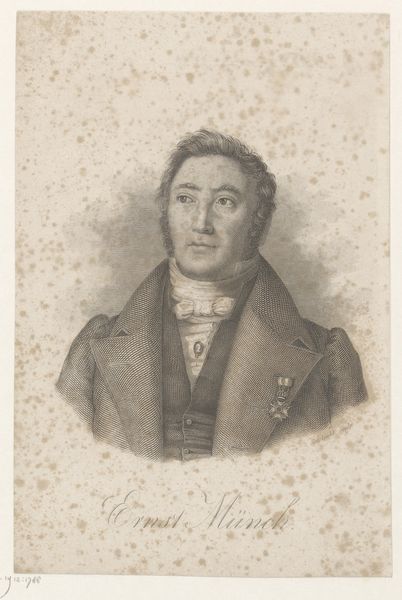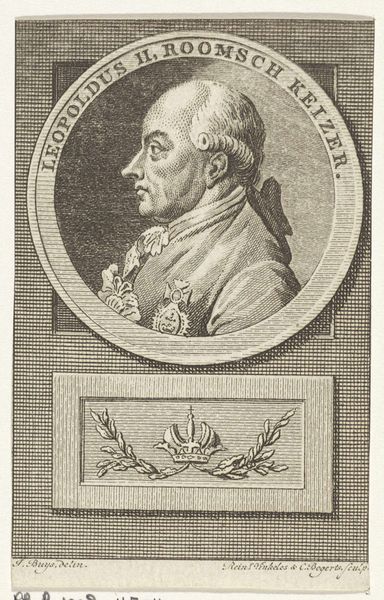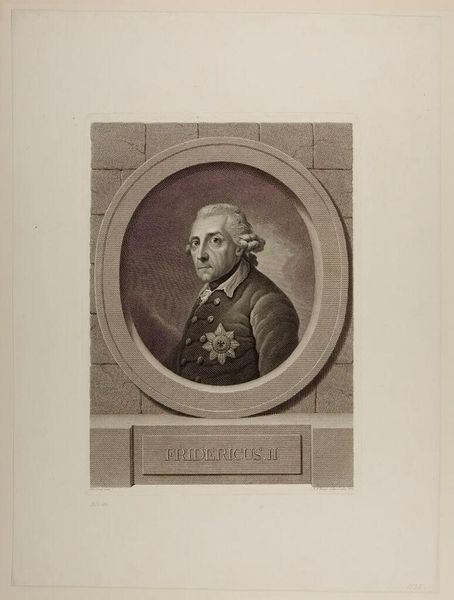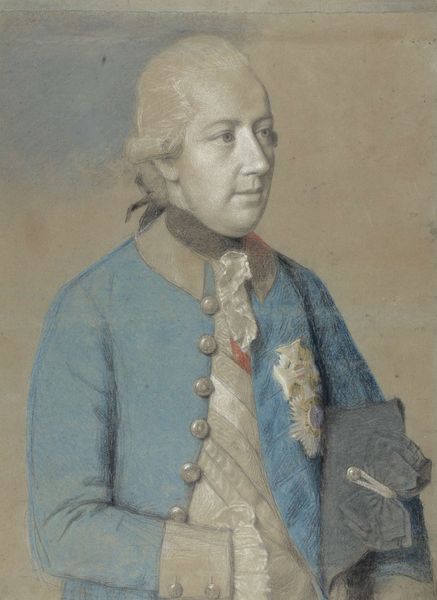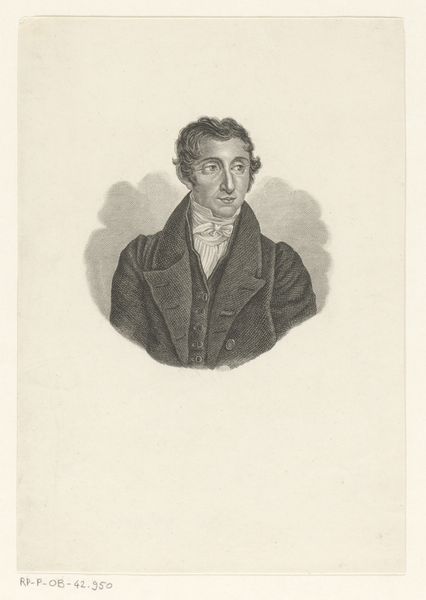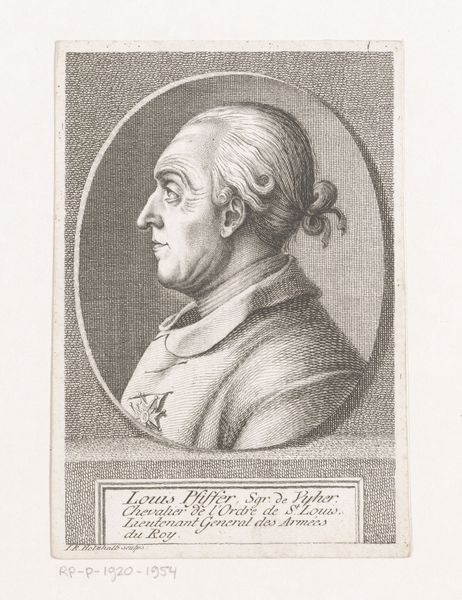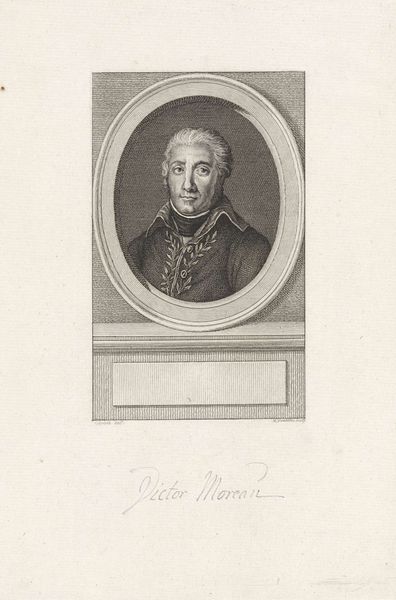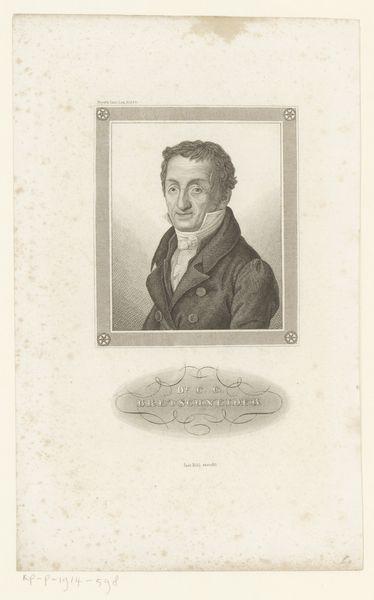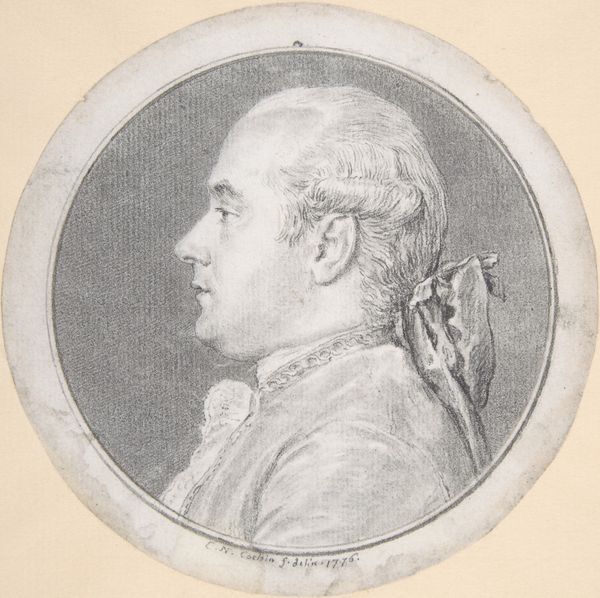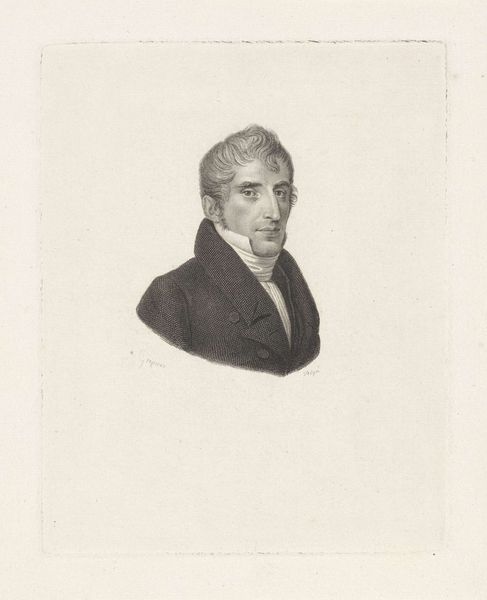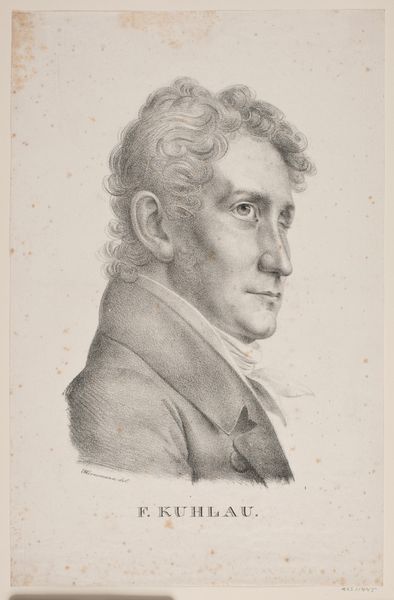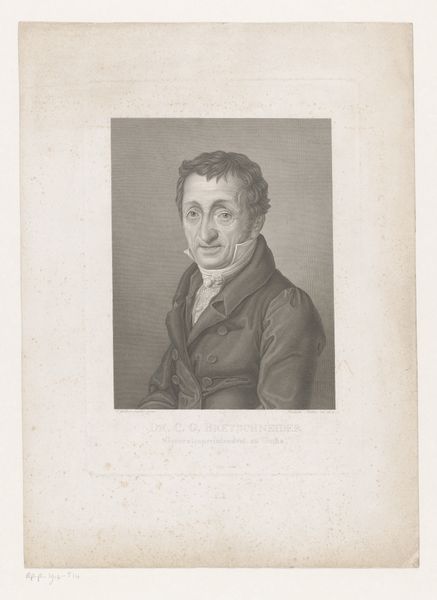
Dimensions: H. 5 1/2 in. (14 cm)
Copyright: Public Domain
Editor: We’re looking at a marble bust of the Marquis de Lafayette by Pierre Joseph Chardigny, dating from 1856 to 1883. It has a really stoic, almost severe quality, and it’s interesting to see how the folds in his jacket contrast with the smoother surfaces of his face. What strikes you about this sculpture? Curator: The tension you observe between surface textures is a crucial entry point. Note how the rigorous geometry of the bust form is disrupted by the comparatively organic and dynamic rendering of Lafayette’s hair. The careful arrangement and detailing, characteristic of Neoclassical sculpture, suggest an intent to project authority through controlled, idealized form. Do you perceive a deliberate interplay of light and shadow across the sculpted features? Editor: Yes, the light definitely emphasizes the bone structure and the seriousness of his expression. It feels very intentional. Are there other elements contributing to this projection of authority? Curator: Consider the precisely carved drapery and the high collar. These design elements draw the viewer's eye upward, focusing attention on Lafayette’s face, and particularly his gaze. The relatively simple composition further directs focus to the idealized subject. Do you see a possible underlying philosophical message in these formal decisions? Editor: I think so. The restraint and idealization speak to a desire for order and perhaps the virtues associated with leadership. This close analysis gives me a new appreciation for the piece. Curator: Indeed. By carefully considering the formal choices, we can begin to understand the work's complex visual rhetoric and the values it implicitly upholds.
Comments
No comments
Be the first to comment and join the conversation on the ultimate creative platform.
